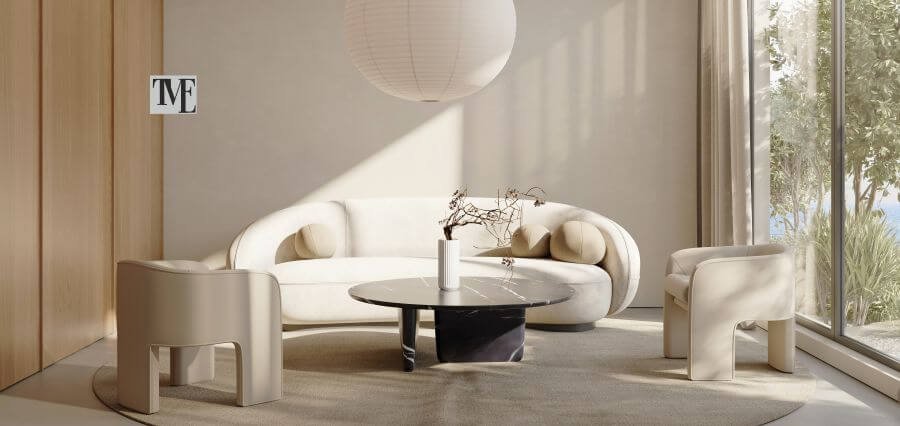Being ahead of interior design trends in the current fast-paced world of interior design is not just a case of keeping up with trends there is the imperative of continuous growth, punctuality, and creativity. The world of design is influenced by cultural change, technological developments, and changing consumer attitudes. For interior designers, to be ahead of these changes is a necessity for the sake of competitiveness and inspirational momentum. Whether you are an established pro or a new star, you must learn to anticipate and respond to emerging trends. It can revolutionize your design efforts and client satisfaction. In order to navigate effectively in the continuously changing world of design, it’s essential to become proactive rather than reactive. Designers who develop this skill don’t only have a creative advantage, but they also set the course for the industry.
Adopt Ongoing Learning and Research
One of the fundamental principles of staying up to date with interior design is dedication to ongoing learning. This is beyond schooling to keeping up with industry journals, trend stories, and design websites. Further, following on from thought leaders on the likes of Instagram, Pinterest, or LinkedIn may expose one to edge-of-the-bloc ideas and forward-looking implementation in real-time.
In addition to information consumption via reading, joining online or live design communities can open one’s eyes. Walking around international exhibitions, trade shows, or design festivals like Salone del Mobile or Maison Objet exposes one to direct cutting-edge designs and technology. Such exposures not only bring the designers up to date but also enable them to experience trends at every level of the senses, and it becomes simple to convert intangible concepts into actionable, client-pitching concepts.
Understand the Cultural and Social Pulse
Interior design trends tend to go very deep, rooted in culture and society. Keeping an ear on the bigger trends can enable designers to anticipate what clients will be looking for in the years to come. For example, the interest in wellness and sustainability in daily life has brought about a boom in demand for green products, biophilic design, and multi-functional furniture that suits minimalism. To value these is to be capable of resetting practice according to the changing priorities of one’s target audience.
Social trends like work from home, urbanization, and lifestyle also influence interior design trends. Millennials and Generation Z, for instance, want personalization and authenticity in interior spaces. They want interiors to be reflective of their values and self-expression. Designers who monitor these demographic shifts and the impact they have on spatial requirements are able to produce designs that aesthetically and functionally appeal to their target market.
Experiment with Technology and Innovation
Technology integration has emerged as the cornerstone of contemporary interior design. Virtual reality (VR) and augmented reality (AR) are changing the manner in which designers communicate ideas, allowing clients to see spaces prior to construction. The use of these technologies not only can streamline the design process but also improve the client experience. Likewise, use of AI-based design software and smart home technology enables enhanced customization and ease of use in the designed environments.
Designers that are open to trying new materials and manufacturing processes like 3D printing, module construction, or green composites—are usually the ones creating new aesthetics and functionality. Interior designers may include these advancements in their work by keeping current with the latest product design and architecture innovation. This allows them to present client’s creative solutions that also address actual problems.
Look for Cross-Industry Influences
Interior design itself doesn’t follow in a vacuum, either. Other sectors that surround it, including fashion, technology, visual art, and even culinary arts, are frequently the precursors to what’s next for interior space. The latest palettes to hit fashion runways, for instance, come on to serve in the residence. Likewise, technology shapes the way individuals engage with space, from smart lighting to built-in entertainment systems.
Designers who have a broad understanding of these inter-industry trends are in the best position to anticipate and respond to change. They are able to draw from a wide variety of sources of inspiration, allowing them to introduce richness, variety, and vision into their interiors. By expanding the scope of their creative inquiry, interior designers make their designs contemporary culturally and technologically.
Conclusion
Staying upto date with interior design trends is an inter-disciplinary activity that takes creativity, forward-thinking, and professional ethics. It calls for dedication to learning, cultural sensitivity, technical know-how, and above all, unencumbered personal vision. An era of change being the sole constant, interior designers find themselves looking towards trends not as doctrine to subscribe to, but as aids to read, reinterpret, and recreate. With this strategy mastered, they not only stay relevant but contribute to forging the future of our workplaces and habitats.





